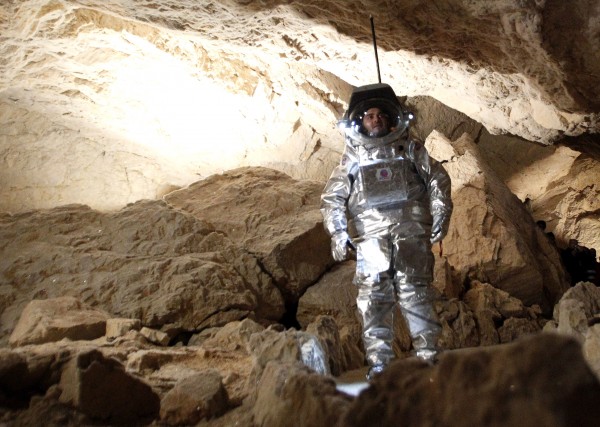Hi friends hotevery.blogspot.com this blog will give every thing you need make book mark this site. keep coming... Anything you need email us to softys007@gmail.com
Monday, 7 May 2012
Russian soft-drinks explained: tastes like forests, rye bread, licorice, bubblegum
Russian soft-drinks explained: tastes like forests, rye bread, licorice, bubblegum
2012-05-07T22:16:00+05:30
Unknown
Newz|Science|
Comments
Beautiful photos from the Hubble Space Telescope

Beautiful photos from the Hubble Space Telescope
2012-05-07T22:08:00+05:30
Unknown
Photos|Science|
Comments
Testing spacesuits beneath the Earth's surface
Testing spacesuits beneath the Earth's surface
2012-05-07T22:05:00+05:30
Unknown
Photos|Science|
Comments
Powdered human baby shipments seized
South Korean customs officials plan to increase customs inspections for powdered human baby flesh after 17,500 capsules were smuggled in less than a year. Powdered human baby flesh cures disease and boosts stamina. [BBC]
House built upside-down in Austria becomes tourist attraction

REUTERS/Dominic Ebenbichle
House built upside-down in Austria becomes tourist attraction
2012-05-07T21:40:00+05:30
Unknown
Others|Photos|
Comments
An interesting way to explain radiation exposure and risk
An interesting way to explain radiation exposure and risk
2012-05-07T21:38:00+05:30
Unknown
Others|
Comments
The lament of the taxonomist
The good news: A recent study of preserved museum specimens revealed
that the Caribbean is home to 39 different species of skink, rather than
the previously-accepted six. The bad news: Turns out that 16 of those species are already extinct. (Via Tim Heffernan)
The New Yorker: A Technological Solution to Global Warming?
The May 14, 2012, issue of The New Yorker is the
"innovators" issue, with articles about the rise of drones in the
United States, an artificial leaf that mimics the way plants convert
solar energy, and a look at the promises and risks of geoengineering our
way out of global warming. Plus, a beautiful cover by Bob Staake.
The New Yorker: A Technological Solution to Global Warming?
2012-05-07T21:29:00+05:30
Unknown
Others|
Comments
A unicycler's guide to physics
Watch this video and you'll better understand both some of the basics
of Newtonian physics and how to ride a unicycle successfully.
The Open Laboratory: Best Science Writing on the Web 2012
Last week, I mentioned The Open Laboratory—an annual anthology of the best science writing on the Internet. Now the 2012 edition is available for pre-order.
This is a great place to start if you want to expand your science RSS
feed, discover trustworthy sources of science news, and learn lots of
interesting stuff in a format perfect for reading on the bus or train.
Bonus: A couple of BoingBoing posts made it into this edition!
The Open Laboratory: Best Science Writing on the Web 2012
2012-05-07T21:26:00+05:30
Unknown
Others|
Comments
Super Moon was, in fact, pretty super (big photo gallery)

REUTERS/Patrick T. Fallon
The full "super Moon", scientifically known as a "perigee moon", rises
over Los Angeles, California May 5, 2012. A "super Moon" lit up
Saturday's night sky in a once-a-year cosmic show, overshadowing a
meteor shower from remnants of Halley's Comet, the U.S. space agency
NASA said. The Moon looked especially big and bright, because it reached
its closest spot to Earth at the same time it was in its full phase,
NASA said. Below, the full moon rises behind a mosque as birds fly in
Amman. Super Moon was, in fact, pretty super (big photo gallery)
2012-05-07T21:06:00+05:30
Unknown
Photos|Science|
Comments
Make's latest weekend project - two solar-powered BEAM bots
[Video Link] Here's MAKE's latest weekend project - two solar-powered BEAM bots. BEAM stands for Biology, Electronics, Aesthetics, and Mechanics. From Wikipedia: "This is a term that refers to a style of robotics that primarily uses simple analogue circuits, such as comparators, instead of a microprocessor in order to produce an unusually simple design (in comparison to traditional mobile robots) that trades flexibility for robustness and efficiency in performing the task for which it was designed."
Make's latest weekend project - two solar-powered BEAM bots
2012-05-07T18:29:00+05:30
Unknown
Others|Science|
Comments
Skillets in the shapes of each of the continental states of the USA

FeLion Studios, an ironmonger with style, has made a set of 48 interlocking "Made in America" skillets, in the shape of each of the continental states. Buy them one at a time or get the whole set (which, admittedly, would probably be a little impractical to store in most kitchens -- it's 500lbs including a maple mounting block).
Skillets in the shapes of each of the continental states of the USA
2012-05-07T18:20:00+05:30
Unknown
Others|
Comments
AAirpass: American Airlines's all-you-can-eat lifetime first class ticket, and what became of it
 The LA Times's Ken Bensinger tells the fascinating, dirty story
of American Airlines's AAirpass, a too-good-to-be-true lifetime
first-class-ticket-to-anywhere-anytime pass that the airline debuted in
1981 at $250,000 (the last one offered, in the 2004 Neiman-Marcus
Christmas Catalog, was priced at $3,000,000, but none sold). Purchasers
could also buy companion tickets they could use to fly anyone along with
them.
The LA Times's Ken Bensinger tells the fascinating, dirty story
of American Airlines's AAirpass, a too-good-to-be-true lifetime
first-class-ticket-to-anywhere-anytime pass that the airline debuted in
1981 at $250,000 (the last one offered, in the 2004 Neiman-Marcus
Christmas Catalog, was priced at $3,000,000, but none sold). Purchasers
could also buy companion tickets they could use to fly anyone along with
them.
The men who bought them -- the article only mentions men -- went a little bananas. They started flying everywhere, all the time. They'd pick random people out of the check-in line and give them free first-class upgrades. They'd fly to Japan for lunch and back to the States that night. One of them was costing the airline more than $1,000,000 a year.
The airline decided to get rid of them. They put private eyes and internal investigators on them. They sued. They extorted passengers who'd flown on companion tickets for confessions that they'd paid for the "gift," and froze their frequent flier accounts, saying they'd only restore them once the passengers fessed up. The ugly tale ends in limbo with the airline's Chapter 11 bankruptcy last year. But on the way, it has a lot of odd and colorful twists.
AAirpass: American Airlines's all-you-can-eat lifetime first class ticket, and what became of it
2012-05-07T18:16:00+05:30
Unknown
Others|
Comments
The honeybees are still dying

The eerie mystery of the vanishing honeybees has not been put to rest.
In the last few weeks, three separate studies explored the effect of insecticides on honeybee and pollinator health. One paper linked neonicotinoids, a new class of systemic insecticides that have come into widespread use in recent years, to impaired honeybee navigation; a second noted the effects of low levels of the pesticides on bumblebee reproduction.
In the last few weeks, three separate studies explored the effect of insecticides on honeybee and pollinator health. One paper linked neonicotinoids, a new class of systemic insecticides that have come into widespread use in recent years, to impaired honeybee navigation; a second noted the effects of low levels of the pesticides on bumblebee reproduction.
Big Gulp: Flaring Galaxy Marks the Messy Demise of a Star in a Supermassive Black Hole
Big Gulp: Flaring Galaxy Marks the Messy Demise of a Star in a Supermassive Black Hole
A close look at a distant cataclysm indicates that the black hole's victim was a red giant star
By John Matson
|
May 2, 2012 |
38
 FLARE UP: A computer simulation
shows the remains of a star, torn apart by the gravitational pull of a
black hole, being pulled into the black hole.
Image: NASA, S. Gezari (JHU) and J. Guillochon (UCSC)
FLARE UP: A computer simulation
shows the remains of a star, torn apart by the gravitational pull of a
black hole, being pulled into the black hole.
Image: NASA, S. Gezari (JHU) and J. Guillochon (UCSC)Big Gulp: Flaring Galaxy Marks the Messy Demise of a Star in a Supermassive Black Hole
2012-05-07T17:50:00+05:30
Unknown
Science|
Comments
Subscribe to:
Comments (Atom)

